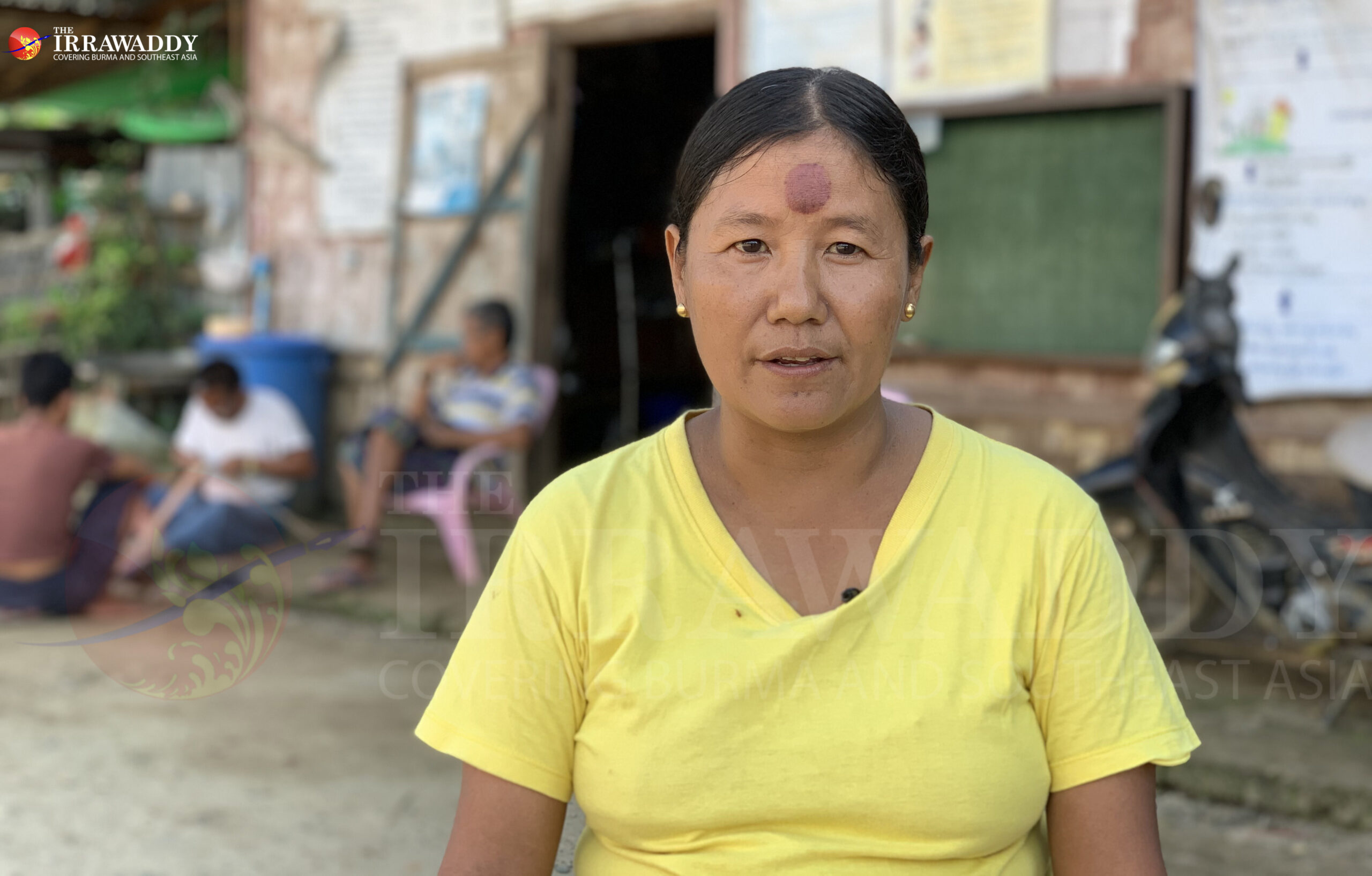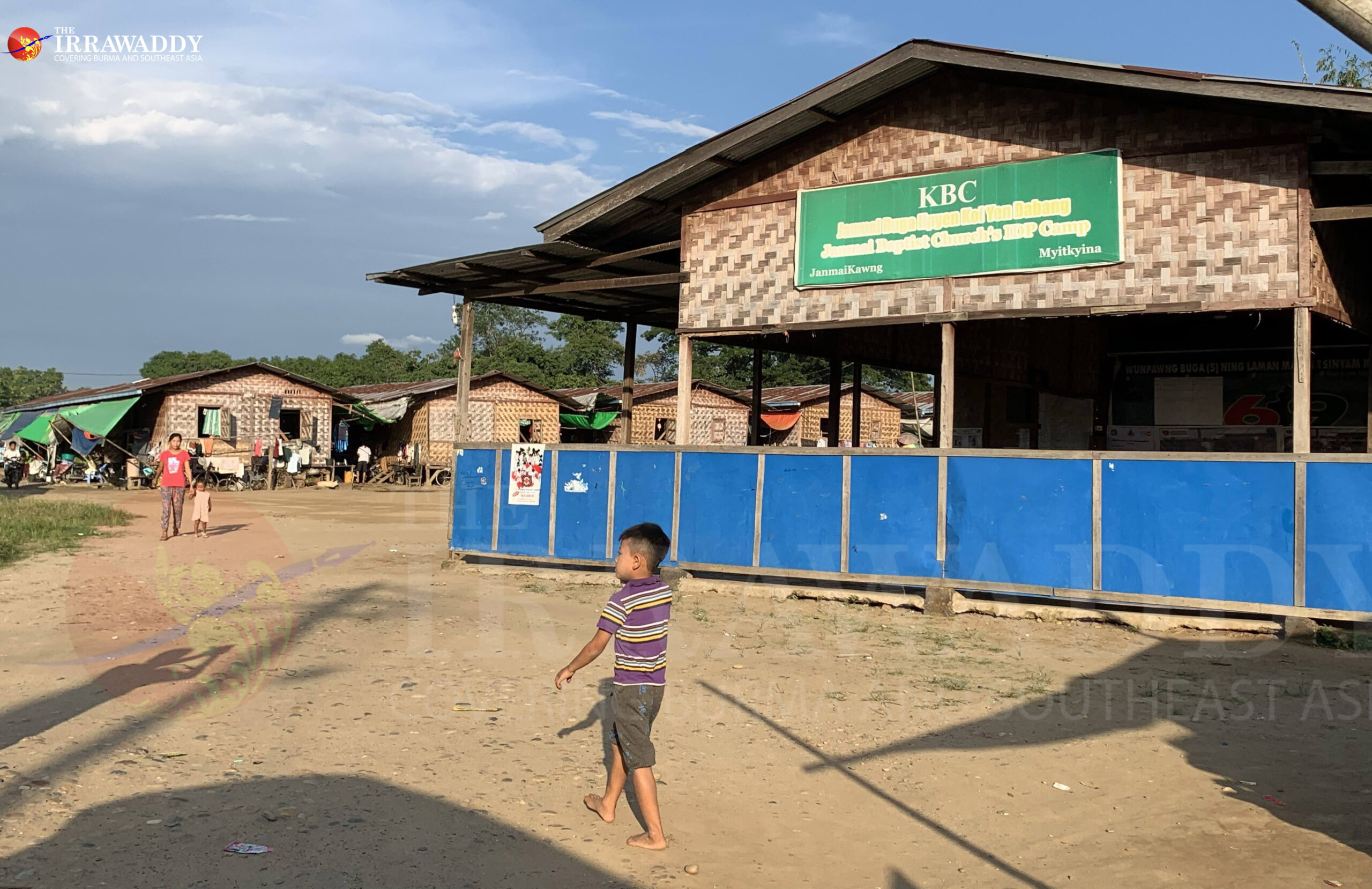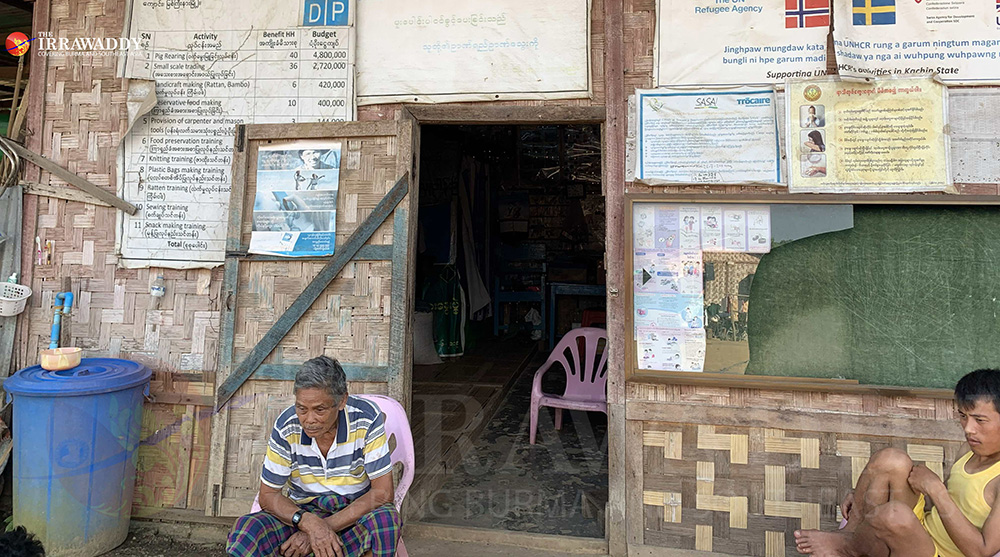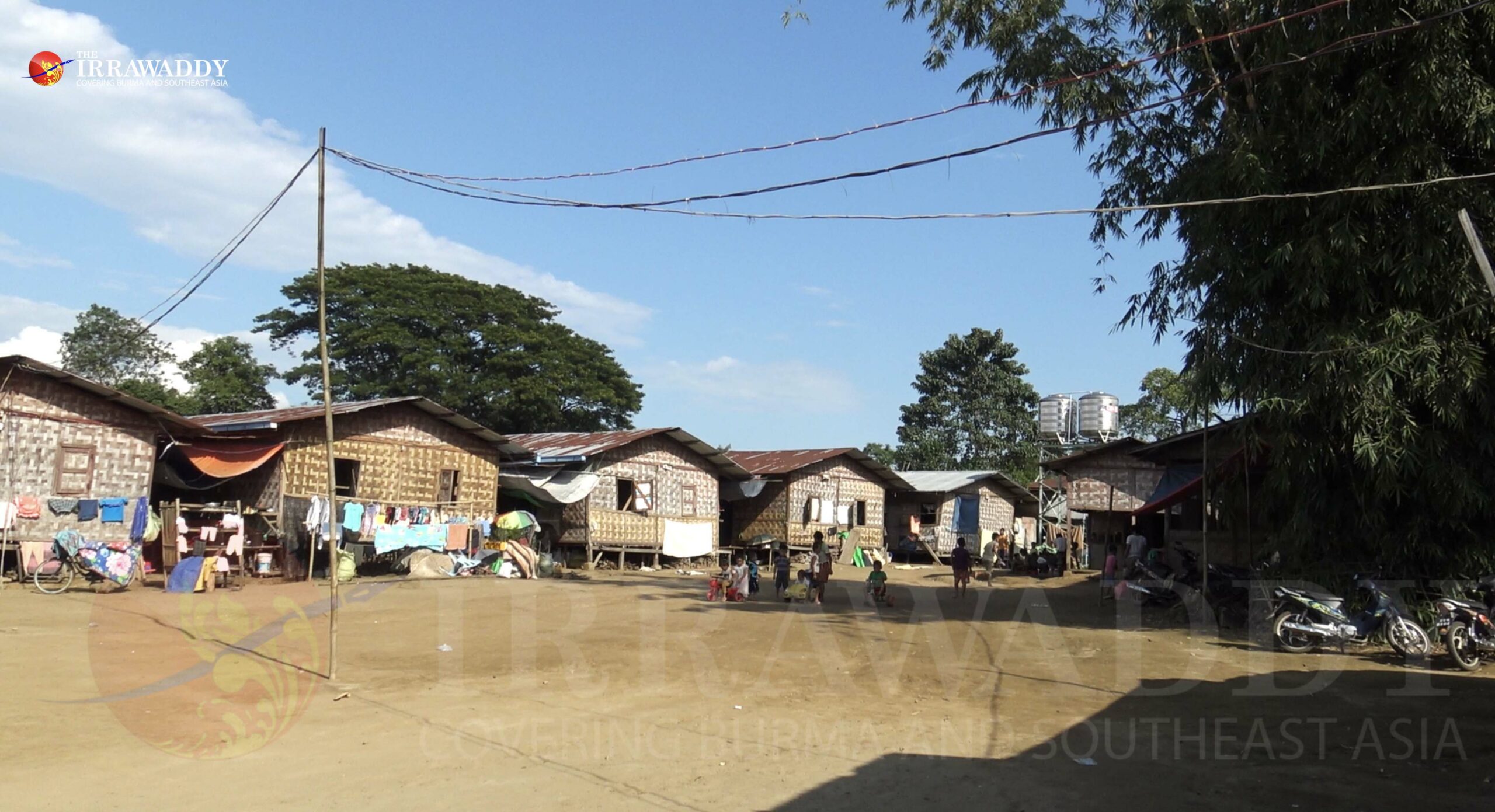MYITKYINA – Armed clashes have become less common this year in Myanmar’s northern Kachin State between the Kachin Independence Army (KIA) and the military’s Northern Command. Both sides are trying to agree on a bilateral ceasefire agreement that would let internally displaced Kachin residents return home.
Villagers began fleeing their homes more than eight years ago.
“When there is a tangible ceasefire, bringing peace, we will go back immediately. If there is safety for us in our village, we are going back, whatever challenges lie ahead,” said Daw Ja Htu from N Wan Kawng Village, which is east of Waingmaw.
The area is under the control of the New Democratic Army – Kachin (NDA-K), a faction of the KIA that turned into a Kachin Border Guard Force, led by ex-Kachin Independence Organization (KIO) officers Zahkung Ting Ying, Layawk Zelum and Ying Zelum since 1989.
It is only two hours’ drive from Waingmaw to Sadone, but the villagers fear for their safety if they return. The road leads to the Chinese border and is a major trade route, exporting bananas from Waingmaw and importing numerous goods from China.

When Daw Ja Htu fled in June 2012 amid fighting between the KIA and forces backed by the Tatmadaw (military), she thought it would only be temporary.
Since then she has been in the Mung Na Baptist Church internally displaced persons (IDP) camp in Waingmaw, supported by the Kachin Baptist Convention (KBC). After eight years in a camp, Daw Ja Htu says her farmland and orchards will be heavily overgrown.
The Mung Na IDP camp hosts 2,833 people, who have fled 39 villages across Bhamo, Momauk, Tanai, Hpakant, Injangyang, Chipwi, Waingmaw and Myitkyina townships since June 2012.
The KIO has been engaged in revolutionary struggle for six decades—since 1961. A ceasefire in 1994 was regarded as a partial success.
But in June 2011, the ceasefire between the KIA and the military government broke down and since then nearly 120,000 people have been forced to shelter in 170 camps in northern Shan and Kachin states.
Along with its allies in the Northern Alliance—the Ta’ang National Liberation Army, Arakan Army and Myanmar National Democratic Alliance Army—the KIA is trying to reach a bilateral ceasefire agreement with the National League for Democracy-led government. The latest talks on Sept. 17 in Kengtung focused on agreements between the government and each armed group, and the return of the IDPs.
But further talks with the Northern Alliance were postponed. In mid-October, chairman N’Ban La of the KIO, the political wing of the KIA, met government peace negotiators in the Thai city of Chiang Mai to discuss a ceasefire agreement and the return of the displaced.
Efforts to smooth out the IDP returns were first suggested in mid-2017 when Kachin Baptist Convention leaders met State Counselor Daw Aung San Suu Kyi.

Since early this year, the Kachin Humanitarian Concern Committee led by the KBC has been working with the government on pilot projects to be able to return the displaced villagers. But little other work is being conducted to return villagers to their homes.
IDPs demand safety after returning
Daw Ze Nyoi from Gang Dau Yang Village south of Waingmaw said she wants a tranquil life in her village. But they fear renewed clashes.
“We fled with only the clothes on our backs. Now, after eight years, we have got some belongings and want to resume our lives. But what if the fighting restarts? We don’t want to flee again,” she said from the Janmai Kawng IDP camp.
Her village and those of many other IDPs are close to Laiza, which hosts the KIO’s headquarters in southern Waingmaw Township. They said their biggest fear is renewed fighting before a ceasefire is agreed.
She added: “We are told anyone can return voluntarily. But we want guarantees … We hear [the government and KIA] hold meetings but they must prove to us there have been results so we can return.”
The visibly distressed Daw Ja Htu from Mung Na IDP camp added: “There is no hope. I don’t have anything to say or cannot think of any hope. There is no hope for our family’s future.”
Good old days
Many of the Kachin IDPs, who fled after June 2011, are farmers who once grew rice or tended orchards.
Children have grown up with no knowledge of village life with its ample space and tranquility. Daw Ze Nyoi, who has three children, sees families losing their experience of rural life.

Her family grew oranges, paddy and vegetables. She earned enough to send her children to study. Since 2016, she said, many teenagers have dropped out of school, as their parents could not fund their education.
In Janmai Kawng IDP camp, Daw Ze Nyoi said dozens of teenagers had abandoned their education, but there were no jobs for them.
In their villages, they could have worked on the farms and orchards. “We don’t blame them nor blame ourselves, because this situation is out of our control,” she added.
Hardship ahead
For all the longing to go back home, uncertainty awaits those who can return.
Under a pilot project, some IDPs have returned to their homes, such in Nam Sang Yang Village in Waingmaw Township.
“We don’t have a plan to go back,” said Daw Khon Naw from Nam Sang Yang, who is sheltering at the Janmai Kawng Baptist Church camp in Myitkyina.
Janmai Kawng IDP camp has been supported by the KBC since July 2011 and hosts more than 1,000 people from 17 villages from Myitkyina, Waingmaw, Hpakant and Sumprabum townships.
She said: “Even though it looks like good news that people are going back, we heard from [returnees] that they are facing difficulties. They told us they were wrong to go back. They were promised government support for six months but there has been nothing.”
Fighting must stop and armed groups must actively help the process, said Gum Sha Awng, the director of Metta Development Foundation. He urged the Tatmadaw and the KIA to consider the people’s needs.

“At least the ceasefire agreement should have been agreed between them. It is important to end the current conflict. The government should increase basic support—such as health care and education—to the IDPs while international aid is falling,” he said.
He added that the concerns of losing customary land tenure under the 2018 Vacant, Fallow and Virgin Land Law was pushing villagers to go back despite the risks.
In Waingmaw, land disputes related to banana plantations are widespread. The IDPs fear their land will be seized for agricultural projects without their knowledge.
Life in an IDP camp
IDPs are often forced to be idle in the crowded camps.
During our short visits, The Irrawaddy witnessed the distress of many IDPs, who do not have anything to do in the compound. A few of them get an income outside the camps for unskilled work as cleaners or farmers on banana or other plantations.
Daw Sawng Nam, a 47-year-old mother of six children, is from Ta Pa Daung Village in Waingmaw. She is now confined to the Janmai Kawng IDP camp in Myitkyina. She works as a mason in Myitkyina for 2,000 kyats (US$1.30) per day.
“It is not enough to feed the family but what can we do? We have this job only for this year and it is not even regular work,” she said.
Her village can be reached within a day but she dare not return. “We cannot stay because the government forces are deployed in the area. We have six children and it is not safe.”
Since 2016, the camp residents are only supplied enough cash to buy the rice, oil and salt that was previously provided by the World Food Programme. Older residents and single parents receive 15,000 kyats per month and families with both parents receive 11,000 kyats.
The cash is only enough to keep people alive, said Daw Ze Nyoi from Gang Dau Yang Village in southern Waingmaw.
Unemployment and trafficking to China are the problems which need urgent attention, added Gum Sha Awng.
Many of the displaced villagers told The Irrawaddy that the lack of work is their toughest challenge.

















